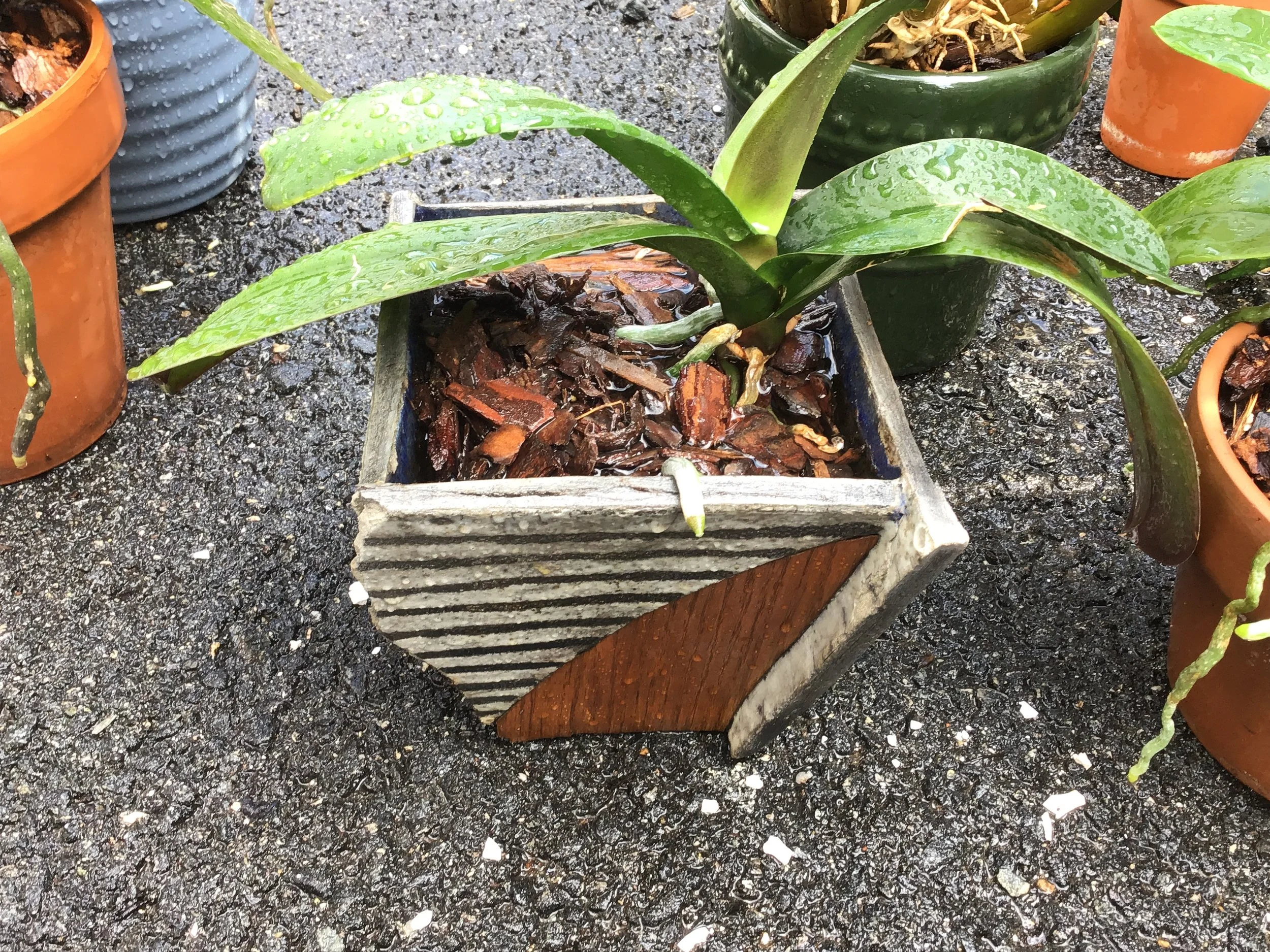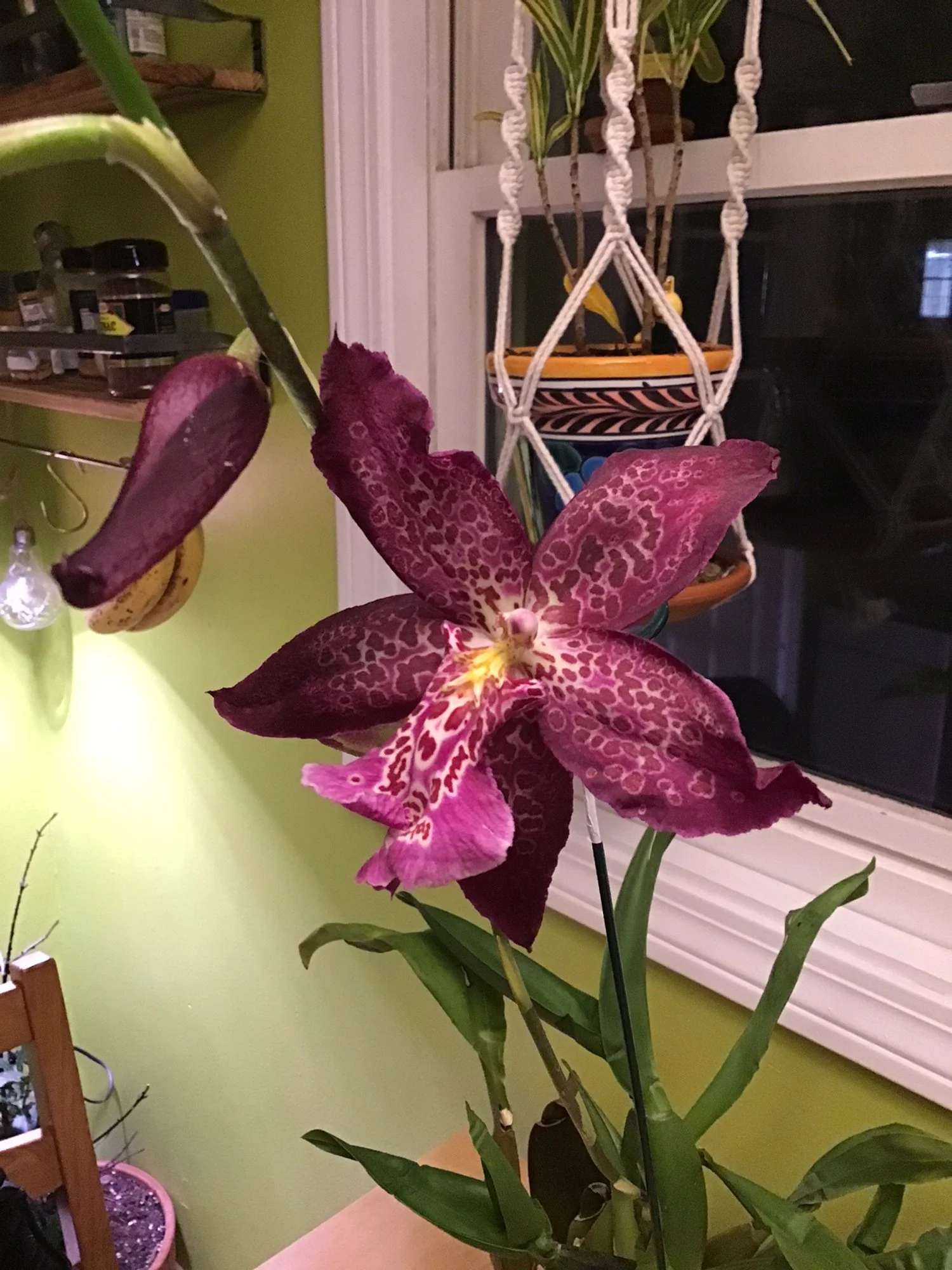Why Won’t My Orchid Rebloom?
The single question I hear most often from orchid owners is when—or if—their plant will bloom again. Buying a flowering orchid can sometimes feel like a bait and switch. Once the petals fall (which can happen fairly quickly when orchids get moved around a lot), you’re left with a fairly nondescript plant. Some people even find them unattractive or weird-looking, especially with their weird aerial roots.
But lack of blooms doesn’t mean your orchid is dead. Far from it! The wild, indescribably beautiful flowers require a lot of energy to produce, especially if an orchid has multiple stems or many blooms. If you think about orchid flowering like a runner thinks about a sprint, it makes sense that afterward, the flower has to recover and catch its breath. That’s essentially what orchids are doing after they bloom.
In a previous post I wrote about when and when not to snip the stalks of orchids after blooming. Following that advice is the first step in getting your orchid to flower again.
One trend I’ve noticed in my own phalaenopsis orchids is that they bloom just as often, if not more, in the winter months than in the summer months. They’re getting less light in the winter, so I figured that would reduce the chances of them flowering, but that’s not the case. As long as they’re still getting a good bit of bright light, the shorter winter days aren’t a problem. In fact, temperature and light changes that signal the coming of autumn also signal orchids to form buds. Our outdoor plants and trees flower and drop seeds before they die back for the winter, and even if orchids don’t die off, autumn provokes a similar response in them.
Orchids also require a measurable difference between daytime temperatures and nighttime temperatures in order to flower. Even though mine are all in my house, the windowsills they live on do get quite cold at night during the winter. Some plants would hate this, but not my orchids. Experts recommend making sure the temperature is roughly 10 degrees colder at night than during the day. I’m sure that difference is bigger for my orchids, especially given how cold Massachusetts winters are, but that’s never been a problem.
(my currently budding/blooming cattelya orchid)
Typical bark used as a planting medium will feed an orchid for up to a year. After that, orchid fertilizer also helps promote growth and blooms. You can buy fertilizer at any store or online. I use it once a month for my orchids (when I don’t forget).
Repotting is the last basic strategy to promote growth and blooming, but it’s also the riskiest and it depends on the status of the orchid’s root system. Generally, I find that orchids need a period of adjustment after repotting, so I’ve personally never seen repotting alone trigger blooms. However, if you haven’t repotted in a long time, that might be making it harder for your orchid to generate flowers.
Box stores provoke blooming via light and temperature manipulation. But if you buy an orchid that’s flowering in July, that doesn’t necessarily mean its natural cycle is to flower in July. It can take a few months for an orchid to adjust to a new environment, especially if it’s one that relies on natural light and seasonal shifts.


